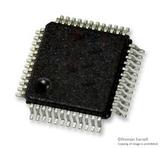
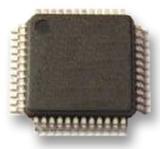
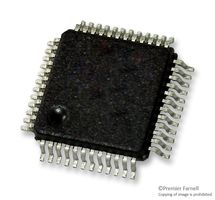
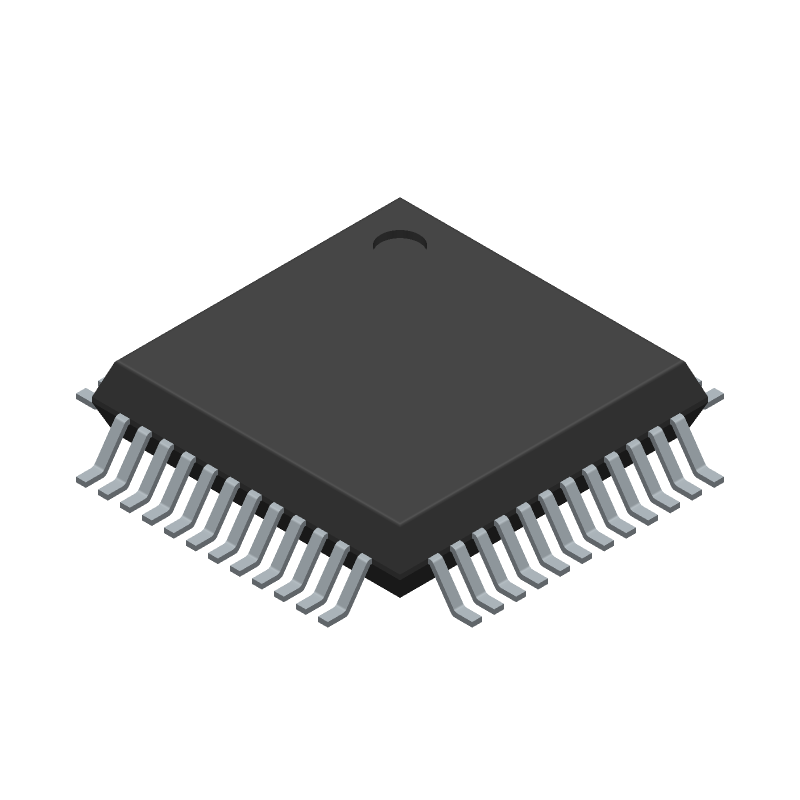
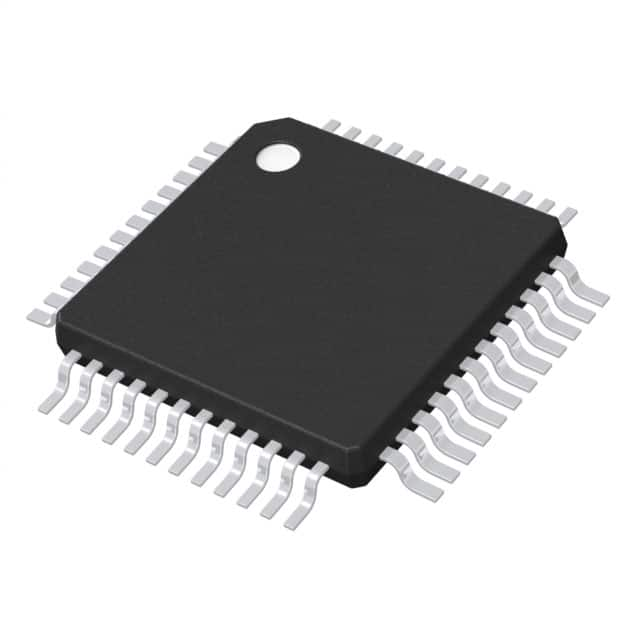
STMICROELECTRONICS STM8L152C8T6TR 微控制器, 8位, 超低功率, STM8L, 16 MHz, 64 KB, 4 KB, 48 引脚, LQFP
The high-density and medium+ density STM8L15xx6/8 ultra-low-power devices feature an enhanced STM8 CPU core providing increased processing power up to 16 MIPS at 16 MHz while maintaining the advantages of a CISC architecture with improved code density, a 24-bit linear addressing space and an optimized architecture for low-power operations.
The family includes an integrated debug module with a hardware interface SWIM which allows non-intrusive in-application debugging and ultrafast Flash programming.
All high-density and medium+ density STM8L15xx6/8 microcontrollers feature embedded data EEPROM and low-power low-voltage single-supply program Flash memory.
The devices incorporate an extensive range of enhanced I/Os and peripherals, a 12-bit ADC, two DACs, two comparators, a real-time clock, four 16-bit timers, one 8-bit timer, as well as standard communication interfaces such as two SPIs, an I2C interface, and three USARTs. A 8x40 or 4x44-segment LCD is available on the STM8L152x8 devices. The modular design of the peripheral set allows the same peripherals to be found in different ST microcontroller families including 32-bit families. This makes any transition to a different family very easy, and simplified even more by the use of a common set of development tools.
**Key Features**
- .
- Operating conditions
- .
- Operating power supply: 1.65 to 3.6 V without BOR, 1.8 to 3.6 V with BOR
- .
- Temp. range: -40 to 85, 105 or 125 °C
- .
- Low-power features
- .
- 5 low-power modes: Wait, Low-power run 5.9 µA, Low-power wait 3 µA, Active-halt with full RTC 1.4 µA, Halt 400 nA
- .
- Consumption: 200 µA/MHz+330 µA
- .
- Fast wake up from Halt mode 4.7 µs
- .
- Ultra low leakage per I/0: 50 nA
- .
- Advanced STM8 core
- .
- Harvard architecture and 3-stage pipeline
- .
- Max freq: 16 MHz, 16 CISC MIPS peak
- .
- Up to 40 external interrupt sources
- .
- Reset and supply management
- .
- Low-power, ultra safe BOR reset with five programmable thresholds
- .
- Ultra-low-power POR/PDR
- .
- Programmable voltage detector PVD
- .
- Clock management
- .
- 32 kHz and 1-16 MHz crystal oscillators
- .
- Internal 16 MHz factory-trimmed RC and 38 kHz low consumption RC
- .
- Clock security system
- .
- Low-power RTC
- .
- BCD calendar with alarm interrupt,
- .
- Digital calibration with +/- 0.5ppm accuracy
- .
- Advanced anti-tamper detection
- .
- LCD: 8x40 or 4x44 w/ step-up converter
- .
- DMA
- .
- 4 ch. for ADC, DACs, SPIs, I2 C, USARTs, Timers, 1 ch. for memory-to-memory
- .
- 2x12-bit DAC dual mode with output buffer
- .
- 12-bit ADC up to 1 Msps/28 channels
- .
- Temp. sensor and internal ref. voltage
- .
- Memories
- .
- Up to 64 KB of Flash memory with up to 2KB of data EEPROM with ECC and RWW
- .
- Flexible write/read protection modes
- .
- Up to 4 KB of RAM
- .
- 2 ultra-low-power comparators
- .
- 1 with fixed threshold and 1 rail to rail
- .
- Wake up capability
- .
- Timers
- .
- Three 16-bit timers with 2 channels IC, OC, PWM, quadrature encoder
- .
- One 16-bit advanced control timer with 3 channels, supporting motor control
- .
- One 8-bit timer with 7-bit prescaler
- .
- One window, one independent watchdog
- .
- Beeper timer with 1, 2 or 4 kHz frequencies
- .
- Communication interfaces
- .
- Two synchronous serial interface SPI
- .
- Fast I2 C 400 kHz SMBus and PMBus
- .
- Three USARTs ISO 7816 interface + IrDA
- .
- Up to 67 I/Os, all mappable on interrupt vectors
- .
- Up to 16 capacitive sensing channels supporting touchkey, proximity, linear touch and rotary touch sensors
- .
- Fast on-chip programming and non-intrusive debugging with SWIM, Bootloader using USART
- .
- 96-bit unique ID
针脚数 48
时钟频率 16.0 MHz
RAM大小 4 KB
模数转换数ADC 1
输入/输出数 41 Input
工作温度Max 85 ℃
工作温度Min -40 ℃
耗散功率Max 307 mW
数模转换数DAC 2
电源电压Max 3.6 V
电源电压Min 1.8 V
安装方式 Surface Mount
引脚数 48
封装 LQFP
封装 LQFP
工作温度 -40℃ ~ 85℃
产品生命周期 Active
包装方式 Cut Tape CT
RoHS标准 RoHS Compliant
含铅标准 Lead Free
REACH SVHC版本 2015/12/17
ECCN代码 EAR99
